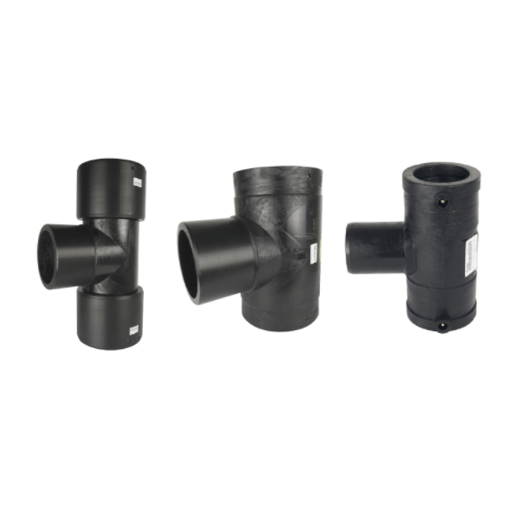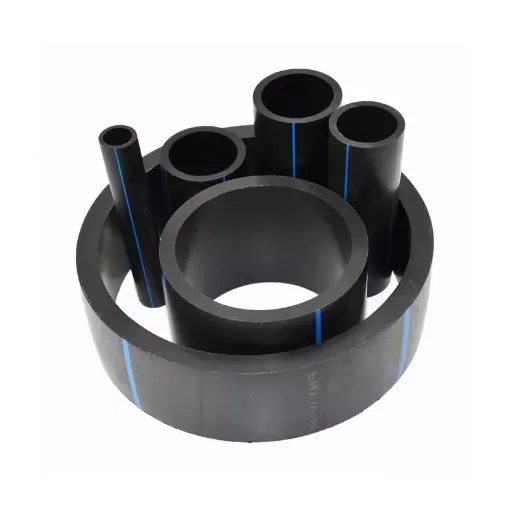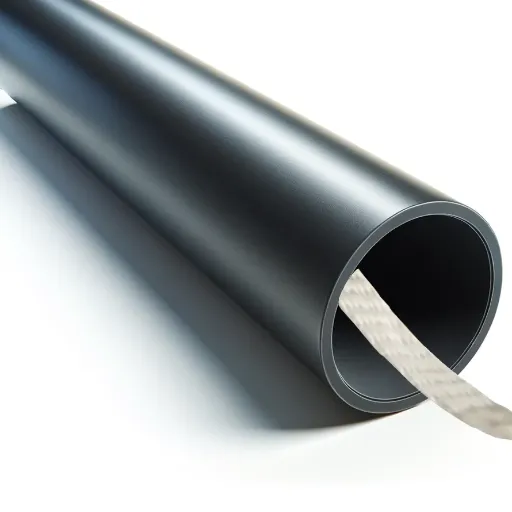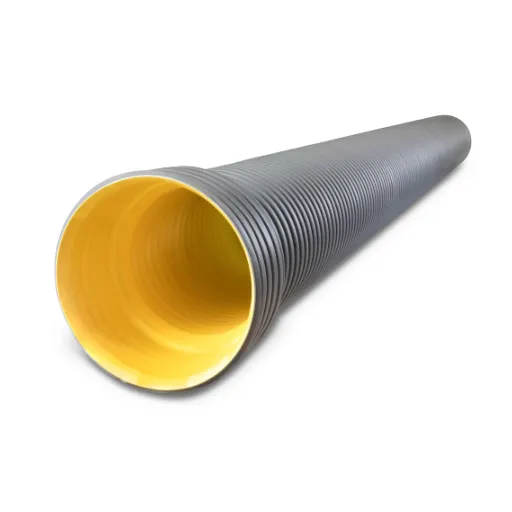High-Density Polyethylene (HDPE) pipe fusion stands as a critical process in industries ranging from water distribution to gas transportation, owing to its reliability and cost-effectiveness. This advanced technique ensures seamless, leak-free joints, providing a durable solution that outperforms traditional piping methods. However, mastering HDPE pipe fusion requires a deep understanding of its technical nuances, best practices, and the tools involved. This article dives into the core techniques behind HDPE pipe fusion, explores its diverse applications across industries, and highlights the distinct advantages that make it a preferred choice for modern infrastructure projects. Whether you’re an industry professional or someone looking to understand more about cutting-edge piping systems, this comprehensive guide will equip you with the knowledge you need to leverage HDPE pipe fusion effectively.
What is HDPE Pipe Fusion and How Does it Work?
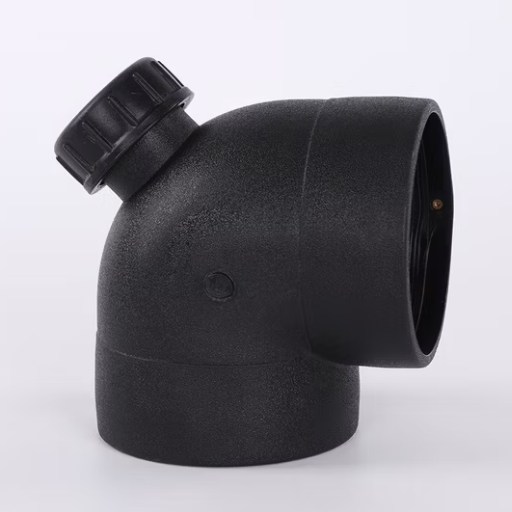
Understanding the Basics of Fusion
HDPE pipe welding processes: also butt fusion processes-a sealing operation without any leakage-passing through very high-pressure sealing of the nose. The pipe ends are heated with a special fusion machine up to a temperature that melts the surface of the pipe. The two molten surfaces are pressed together for a period under specified pressure. Once cooled, the joint line is stronger than or equal to the original pipe in strength, ensuring durability and reliability.
Fusion processes involve pipe preparation, alignment, heating, fusion, and cooling. In the preparation phase, the ends of pipes must be clean and well-aligned for the fusion to be successful. During heating, a hot plate melts the surface of the pipe ends evenly. During fusion, the pipe ends are brought together under suitable pressure as the molecular bonding process takes place. Then the joint is allowed to cool naturally so as to maintain integrity.
This kind of fusion should be used in water distribution plants, gas systems, and industrial piping as it assures high strength and reliability, and resistance to environmental factors. Proper equipment and proper adherence to the manufacturer’s recommendations are an imperative condition for achieving a trustworthy result; hence, HDPE pipe fusion is considered one of the wisest options for any sustainable infrastructure.
Types of Fusion Techniques for HDPE Pipe
Pipes must be joined by various techniques, depending on the specific requirements of the particular project and operational conditions. Among the several joining techniques of HDPE pipes are butt fusion, electrofusion, saddle fusion, and socket fusion. All these techniques, when properly applied, ensure very strong and leak-free joints.
- Butt Fusion: Butt fusion is the most common method of joining HDPE pipes. The ends of two pipe segments are heated until molten and then pressed together under controlled pressure. Under ideal conditions, it produces a smooth and homogeneous joint, with strength equal to that of the pipe itself; thus, the butt fusion process is suitable for welding materials being subjected to high pressure, such as in water, gas, and industrial systems.
- Electrofusion: Electrofusion procedure melts the faces of an HDPE pipe, which are joined together, through an electrically heated coupling. The coupling comprises an internal heating wire embedded within it. When electric current passes through the wire, the wire and coupling walls get heated, thereby melting the facing surfaces of the pipes inserted in the coupling inside. The process is extremely popular for repairs or any connections requiring precision in cramped spaces.
- Socket Fusion: Socket fusion uses a heated tool with male and female adapters to heat the inside of a fitting and the outside of a pipe. While under the heat, these two are joined by the insertion of one into the other, resulting in a secure connection. That method is applied to thermal-plastics piping and fittings of smaller diameter sizes.
All those methods use specialized pressure couplings and must be strictly implemented within the manufacturer’s and industry standards for safety, performance, and life expectancy. Selection is based on pipe size, the kind of environment in which it will be working, and application requirements.
Advantages of Using High-Density Polyethylene Pipes
There is more than one reason for the application of the HDPE pipe in the respective industry. Firstly, the HDPE pipe is more suited to durability and resistance to wear and tear. Their high tensile strength supports their resistance to pressure and external loading to a significant magnitude, while their inherent flexibility resists cracking against abrupt, extreme external environmental conditions, which otherwise may crack most materials, especially in freezing conditions. So, in all, being unable to resist crack formation, they are not suitable for long-term-use applications such as water distribution, gas pipeline, and sewage; HDPE pipes are suitable to resist crack formation for the above heavy-duty operations.
Secondly, HDPE pipes are also well protected from corrosion, chemicals, and biological agents. They may not rust or dissociate chemically-agents, wherein hazardous metal pipes would lose their structural strength and function. Hence, in a sense, these pipes may also be taken as chemical-resistant for carrying almost all types of substances. Another feature HDPE pipes have is their very smooth internal surface, which decreases the resistance force between the inner pipe surface and the flowing fluids so as to facilitate higher flow efficiency and comparatively less pressure loss. Such a property of HDPE pipes is an added advantage in those flow systems where it is crucial to maintain flow rate and energy efficiency.
Above all, HDPE pipes are light in weight and hence economical to install. Less weight comes cheap on transportation and handling, joining is simply done in the field by one of the many joining processes available to produce leak-proof joints, thus greatly improving operational reliability. Being lifelong and maintenance would lower the present value of lifecycle costs, thus providing a green and economically feasible choice for any infrastructure development.
How Does Butt Fusion Differ from Socket Fusion?
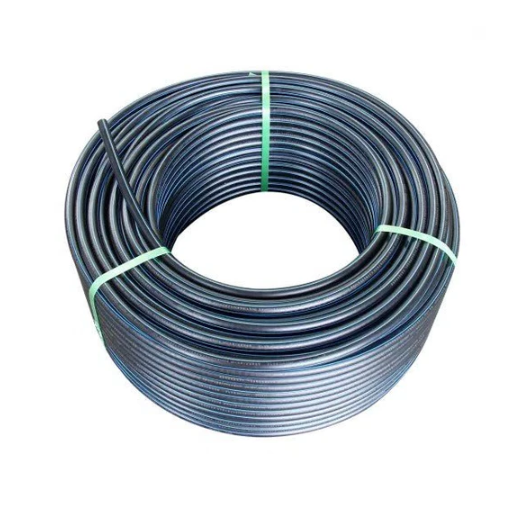
Step-by-Step Butt Fusion Procedure
- Preparation of Materials: Ensure the thermoplastic pipes or fittings to be joined have clean, dry, and contaminant-free surfaces. Use a dedicated pipe scraper or cleaning tool to remove any oxidation and dirt from the pipe ends. Surface preparation of the joining surfaces is imperative to achieve a strong fusion.
- Alignment and Clamping: Place the pipes in the butt fusion machine clamps. Confirm the proper alignment of the pipes since misalignment could either cause uneven heating or yield a weak joint, both of which would directly influence the structural integrity of the connection. If necessary, adjust the clamps until the fit is perfect.
- Facing Pipe Ends: Face the pipe ends using a facing tool and make sure they are fine and square with the axis. This procedure gets rid of all imperfections that might interfere with fusion. From the moment of facing any surface, do not touch the prepared surfaces.
- Heating: The heating plate has to be located between the pipe ends and heated to the required temperature as per the material specification. Temperature readings should preferably be checked by a pyrometer or, at a minimum, by an infrared thermometer. The time taken for heating will vary with pipe diameter, wall thickness, and type of material.
- Heat-Soak Phase: The pipe ends are said to retain the heating plate during the heat-soak period to remain good and even, so soft across the entire surface. Follow the manufacturer’s specifications on the duration of heat-soak and the pressure to be applied.
- Fusion and Joining: Once the heat soak phase is completed, the heating plate is removed quickly, and the molten pipe ends are pressed together with a force that is adequately controlled. A uniform melt bead is usually produced along the joint during the joining phase as pressure is kept steady.
- Cooling Time: Force is kept on the joint during cooling to allow the materials to set and develop a solid, final bond. The joint should not be moved or disturbed during this time. The cooling period is influenced by the materials and pipe sizes.
- Inspection: Visually examine the finished joint for even bead formation and check for any stipulated quality criteria, such as bead dimensions and alignment. Perform a mechanical test or non-destructive test (NDT), if necessary, to certify that the weld is capable of meeting performance criteria.
If all of these detailed methods are followed, the butt-fusion operator will be able to lay joints of high quality and leak-proof that comply with industry standards and specifications.
Exploring Socket Fusion Techniques
Socket fusion has been used for welding for a long period, mostly when dealing with thermoplastic pipes and fittings. The process entails heating both the external surface of the pipe and the internal surface of the fitting by using special heating tools referred to as sockets so that the materials are properly melted and bonded at the molecular level. Heat must be applied correctly, with welding guidelines suggesting an exact temperature range from 450°F to 500°F (or 232°C to 260°C), depending on the kind of material used.
Upon the surfaces attaining semi-liquid condition or recommended molten state, they are pressed together under certain pressure for a fixed length of time, thus assuring complete homogenization at the joint. Insert depth, depending on pipe size, heating time, insertion time, cooling time, and alignment, is all calculated and strictly observed to the pipe size and material used for welding.
The method’s proven reliability comes from its simplicity and adaptability to interfacing different industrial processes like plumbing, chemical transport, and gas distribution systems. Besides providing leak-proof joints without adhesives or mechanical reinforcement, socket fusion also complies with standards, including ASTM F1056, for polyethylene and polypropylene piping systems.
The method mostly requires calibrated equipment, with additional tests such as visual inspection and NDT to be carried out for checking the status of weld joints used in the system in service and under actual operating conditions for a longer period.
Choosing the Right Fusion Machine for Your Needs
Selection of a fusion machine plays a crucial role in the realization of optimum performance, reliability, and compliance with a piping system. The selection process should center on factors such as material compatibility, operational specifications, and standards. First, consider the compatibility aspect of the machine, i.e., if it is calibrated to fuse the particular type of material of pipe used (like PE, PP, or any other type of thermoplastic), as some machines might not be accepted to work with all kinds of materials. Furthermore, another consideration would be the minimum diameter and the maximum diameter range supported by the machine, since this feature decides, to a certain extent, whether the machine can be utilized for certain projects.
Also important is the control system of the machine. New-age fusion machines are equipped with automated data-logging technologies, recording the fusion parameters of temperature, pressure, and time, closely aligning with quality assurance needs, with the audit trail records. Machines that allow input of welding cycles through a friendly user interface make welding easier and also reduce the likelihood of operator error, especially in large-diameter and high-pressure piping applications.
In addition, consider adherence to standards such as ASTM International specifications or ISO certification. Machines accepted for and comply with these standards may ensure consistent welding performance and longer-term durability in corresponding operating conditions. The machine choice will also be influenced by environmental factors such as site accessibility and power requirements; practically, portable battery packs would be ideal for remote-on-site applications, whereas machines with higher outputs would suit factory settings.
Essentially, the selection of a fusion machine is based on the combination of technical evaluation and project-specific needs assessment to ensure smooth operation that conforms with industry norms for a safely and efficiently erected piping system.
What Are the Best Practices for Fusing HDPE Pipes?
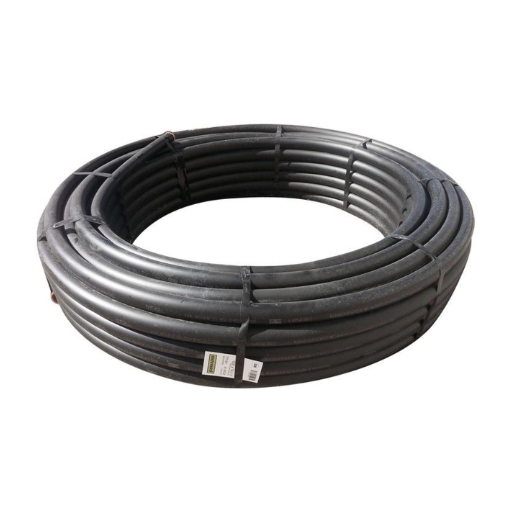
Maintaining Optimal Fusion Pressure and Temperature
With HDPE pipe joints, achieving first-class fusion pressure and temperature conditions is tantamount to integrity and reliability. The fusion pressure has to be suitably chosen and adjusted for a specific pipe diameter and wall thickness, as well as according to technical datasheets provided by pipe manufacturers. Insufficient pressure means incomplete joining of the pipe surfaces, and excess pressure leads to bead formation defects in the structurally compromised pipe.
Temperature controls the proper melting of the pipe material. Heating element temperature, depending on application and pipe specification, should, in general, exist between 400°F and 450°F (204°C to 232°C). The heating operation may be influenced by ambient conditions such as wind or extreme cold, and therefore adjustments should be employed to compensate for the effect. For best results, operators should rely on a calibrated heating tool with a digital thermostat on the heating tool during temperature measurement at the fusion process.
The enhanced machines are allowing monitoring systems with feedback in real time to help the operator follow digitally the pressure, time, and temperature, thus ensuring respect of the project standards, minimizing risks of operator error. Good practices together with the industry codes (ASTM F2620 or ISO 21307) ensure the maximum strength and service life of joints in HDPE piping installation, even in a harsh environment.
Ensuring Proper Bead Size and Joint Integrity
If a proper bead size and joint integrity in the HDPE pipe fusion are critical for the successful outcome of the process, an adequate bead size visually confirms heat and pressure application so that the fusion process has enough confidence to be filed with stringent industry requirements. The bead size and symmetry should match with project specifications under ASTM F2620 and ISO 21307 standards, among others. A bead too small might threaten the joint’s cohesion, denoting either an under-application of heat or pressure, whereas one that’s oversized points to an over-application of heat, with the risk of degrading the material.
The advent of advanced monitoring technologies now ensures bead quality and joint integrity. Modern high-end fusion equipment provides valuable information on temperature, force, and alignment during the welding period through calibrated sensors so that any deviations from the optimal values can be immediately addressed before they result in a failure. In recent times, non-destructive testing techniques, including ultrasonic testing (UT), have been further used to assess the in-plane uniformity and strength of welded joints without hampering the operational capability of the pipeline.
Applying such methods reduces manual interventions, thus improving accuracy, and brings the installation process in line with contemporary engineering best practice. Major technical developments are rendering very far applications and installations much more viable from the standpoint of long-term performance and durability, even in cases where the structures have had to face tough environmental conditions or the most severe of high-pressure scenarios.
Troubleshooting Common Fusion Issues
Thorough troubleshooting on issues connected with fusion requires a comprehensive look at the equipment and processes used. The following are among the most commonly encountered issues related to fusion, along with their causes and suggested remedies:
- Joint Misalignment: A joint with small or compromised structural strength results from the misalignment of the pipe ends during fusion. This defect is mostly brought about by incorrect settings of the fusion machine or improper clamping of the pipes. To rectify this problem, ensure the joint pipe ends are properly aligned in the fusion machine and that all clamps are properly tightened before the fusion process. Frequent calibration of fusion equipment is necessary so that recurring problems are eliminated.
- Fusion Cycle Interrupted: Interruptions during fusion cycles usually produce weak joints. Interruptions can be from loss of power, equipment failure, or simply an error on the part of the operator. Installing a power backup for all critical equipment and carrying out regular maintenance checks for fusion machines can go a long way toward eliminating such interruptions. Also, thorough operator training and strict procedural adherence should serve to minimize human errors.
- Excess Bead Formation: Too much molten material extruding from the joint interface may be a subtle indication of overheating or wrongly set pressure. Review the temperature control settings and ensure that fusion operations are in accordance with the parameters of the manufacturer’s data. More accurate temperature and pressure control during fusion is ensured if precision thermometers and pressure gauges are employed.
- Surface Contamination of the Joint: Dirt, water, or grease on pipe ends can weaken the molecular bond formed during fusion. To avoid such a situation, all joint surfaces must be cleaned and dried before commencement of the fusion. Use non-abrasive degreasers and lint-free cloths for these purposes.
- Cracking or Failure of Joints During Pressure Testing: Folding after pressure testing arises due to inadequate cool time or insufficient fusion pressure. Chill after fusion and pressure tests strictly to the recommended times and pressures, respectively. Consider installing an online monitoring system during the cooling process to enhance this step.
With a systematic approach to these problems, valid calibrated instruments, normalizing of procedures, and adequate training for operators may assure a minimum quality of fusion joints. Further inventions in troubleshooting and integrating technology only enhance productivity and accelerate the lifespan of projects.
What Are the Applications of HDPE Pipe Fusion in Different Industries?
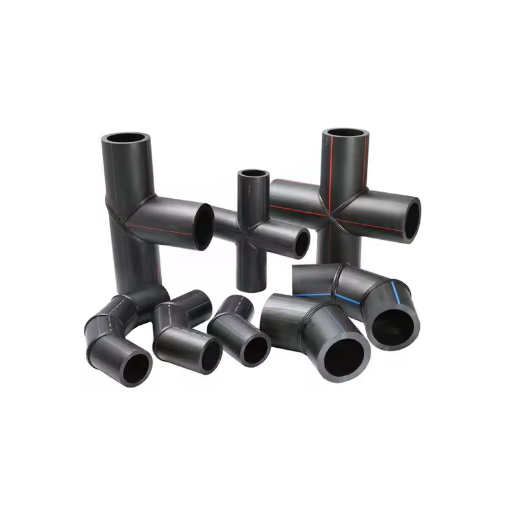
Using HDPE Pipes in Geothermal Applications
With their durability, resistance to temperature variations, and good bending ability, HDPE pipes have become an essential feature of any modern geothermal application system. They are traditionally used within geothermal heat pump systems since the pipes must endure harsh environmental conditions for an extended operation period. The corrosion resistance of HDPE poses an excellent solution in subterranean installations where exposure to soil chemicals and moisture could be detrimental to other materials.
The ability to thermally fuse HDPE pipes is a significant advantage in geothermal systems because this fusion process produces joints that are free from leaks and are without seams. Such a level of assurance and efficiency is needed for systems where interrupted fluid flow serves as an unacceptable condition. According to current studies, geothermal systems that utilize HDPE pipes reduce energy consumption, but also reduce the overall operational costs of the systems over time, with an average lifetime expectancy of over 50 years.
In geothermal installations, these pipes are highly active in both horizontal and vertical loop configurations. For vertical loops, the high-pressure rating of HDPE ensures endurance under the stress imposed by deep-borehole systems, which, depending on the situation, range between 150 and 400 feet. HDPE pipes also conform to stringent industrial standards, which provide the compatibility and consistency demanded by a complex installation. Designs that are lightweight and yet sturdy not only make transport easier but also installation in areas of severe terrain.
Making use of the unique properties of HDPE, the industrial and municipal sectors may go a long way in enhancing the efficiency and sustainability of geothermal systems, therefore making it a defining factor in the shift toward renewable energy sources.
Benefits in Municipal and Water Applications
The use of HDPE (High-Density Polyethylene) pipes in municipal and water infrastructures offers modern solutions that stand apart owing to their properties and efficiencies in operation. Below are five essential benefits:
- Corrosion Resistance: HDPE pipes are not prone to corrosion, unlike traditional materials such as steel or iron. Corrosion resistance is essential, as exposure to chemicals or soil contamination from the outside characterizes certain environments. It is estimated that HDPE pipes can last for more than 50 years in normal working conditions, hence greatly limiting the potential for repair or replacement.
- Leak-Free Joints: HDPE piping systems combine heat and pressure to achieve fusion, resulting in continuous joints that are free of leaks. The presence of leakages in water distribution systems causes untapped losses of about 20-30% through the aging municipal systems, an estimate reported by the American Water Works Association (AWWA).
- High Flow Capacity: With the interior smooth surface of HDPE pipe, it has a lower coefficient of friction than conventional materials. So, higher flow rates with lower pumping costs may result. For instance, studies have shown that HDPE systems have hydraulic efficiency up to 30% greater than those with cast iron pipes of the same size.
- Flexibility and Earthquake Resistance: HDPE pipes can resist ground movements due to their flexibility, which makes them one of the best choices for installation and use in seismic zones. Seismic performance tests have shown HDPE pipes to be vastly more resilient wherein other materials either crack or rupture under similar conditions.
- Cost-Effective Installation: The lightweight nature of HDPE pipes not only facilitated their easy transportation but also reduced the installation cost. Further savings arise from trenchless installation methods such as directional drilling, which reduce disruption and thus cost. Industry analyses show that installations using HDPE can cost about 25-50% less than those using traditional pipe materials.
Such advantages put HDPE systems at the heart of an efficient, sustainable, and resilient municipal water infrastructure. The use of these pipes is well within stringent environmental standards while allowing economic benefits over the long term.
Industrial and Mining Uses of HDPE Pipes
HDPE pipes have gained a reputation for use in industrial and mining operations on account of their superior durability, chemical resistance, and flexibility. Within these industries, HDPE pipe systems are installed to carry abrasive materials, chemicals, and slurry under high-temperature and harsh environmental conditions. The highly abrasive nature of these pipes makes the amenability to maintenance quite costly; hence, these pipes being highly wear-resistant prove to be cost-efficient during the years of service.
In mining, HDPE pipes provide tailings transportation, dewatering, and highly corrosive fluid conveyance. These pipelines have proven to be more resistant to scaling, sedimentation, and chemical degradation when compared to traditional materials like steel or concrete. Also, since they are lightweight and easy to install, logistics are simplified, especially in places that are often a challenge to access, such as rugged terrains.
Industrial installations also rely on HDPE pipes for their ability to withstand pressurized systems and diverse fitting types. Pipes in food processing plants, for example, are HDPE ones because they meet sanitary regulations and are somewhat non-toxic. Industries that transport chemicals, such as petrochemical industries or waste treatment plants, use HDPE due to its resistance against cracking and environmental stresses.
Leakage-proof joints are ensured by advanced manufacturing and fusion welding processes in HDPE piping systems, thus improving the operational efficiency of both industrial and mining application areas. The exposure of HDPE pipes to these sectors epitomizes their untouchable performance and adaptability under severe environmental conditions, thus supporting the global demand for sustainable and long-term infrastructure solutions.
How to Choose the Right Fitting and Fusion Equipment for Your Project?
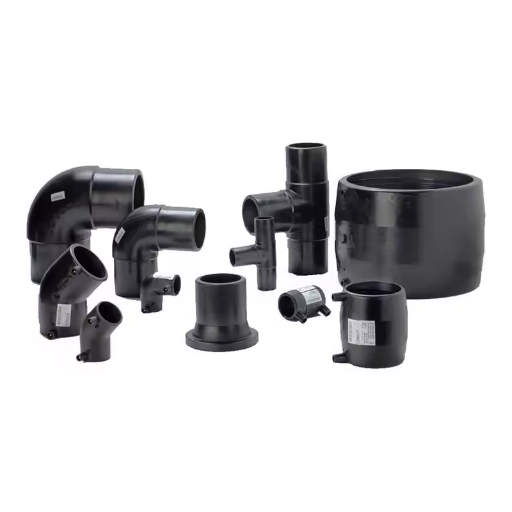
Understanding Pipe Specifications and Size Options
Selection of the correct pipe specifications and size is a very important factor that aids in the better performance of HDPE piping. Pipe specifications are adequately dictated by pressure ratings (usually classified under Standard Dimension Ratios or SDRs), material grade (such as PE4710 or PE100), and an industry standard such as ASTM, ISO, or AWWA. The size of the pipe is typically chosen according to the flow requirements of the particular application, considering velocity, head loss, and expected hours of service.
The varying diameter of HDPE pipes can be anything from smaller tubing for an irrigation system to a very large-bore pipeline used in an industrial or municipal application. For example, they can be anywhere between ½ inch and more than 63 inches. The thickness of the walls, which is determined via SDR, is directly related to the pressure-handling capacity of the pipe. Thus, an SDR value must be low to control high pressure, which signifies a thick wall.
Further, the pipes should be selected accounting for factors such as chemical compatibility of the fluid to be transported, temperature range, and potential for UV exposure. Proper analysis of such parameters shall not only ensure efficient operation but may also reduce the risk of premature system failure or expensive repair. Preferably using a systematic, data-driven approach and by prevailing civil engineering principles, whenever pipe specifications and sizes are selected for an HDPE installation.
Evaluating Fusion Equipment for Durability and Flexibility
In anticipation of HDPE systems, certain essential technical qualities related to fusion equipment should be pondered upon, chiefly with an intent to ensure its lasting capability and to accommodate other project-specific requirements. Fusion equipment is, therefore, almost everything in terms of durability if it cannot withstand working for quite long cycles without overheating or suffering mechanical degradation. Heater plates, facing units, and hydronic systems must thus be made of superior-grade materials to withstand severe thermal and physical stresses.
Flexibility refers to the ability of the fusion machinery to be modified to suit different pipe diameters, working environments, or site restrictions. For example, certain machinery construction is of the modular kind so that technicians can simply swap module arrangements for pipe sizes from small 12-inch systems to big projects of 63 inches and above. Additionally, further beneficial automation features such as data logging and real-time monitoring of fusion parameters can be added to guarantee that the joint integrity cannot be compromised due to operator error.
In conclusion, selection of fusion machines with a priori assessment of these durability and flexibility parameters, including the technical specifications viewed directly from the manufacturer, third party certifications such as ASTM or ISO at the very least, and performance data from field activity subsidizes engineers and project managers to strategically plan their fusion strategy, thereby not just fulfilling immediate operational requirements but also ensuring the long-endurance of the HDPE system.
References
Frequently Asked Questions (FAQ)
Q: What is HDPE pipe fusion, and how does it work?
A: HDPE pipe fusion is a process of joining two pieces of High-Density Polyethylene (HDPE) pipe by heating their outer surfaces and then pressing them together to form a continuous, leak-proof connection. This is achieved using specialized equipment to ensure precise temperature and pressure control.
Q: What are the main techniques used in HDPE pipe fusion?
A: The main techniques used in HDPE pipe fusion include butt fusion, electrofusion, and saddle fusion. Each method uses different equipment and procedures to fuse two pieces of plastic pipe, ensuring strong and durable connections.
Q: How does electrofusion differ from other fusion methods?
A: Electrofusion involves using special fittings with embedded heating elements. When an electric current is applied, the elements heat up, fusing the fitting to the pipe. This method is particularly useful for connecting pipes in confined spaces or for making repairs.
Q: What are the advantages of using HDPE pipes and fusion methods?
A: HDPE pipes offer excellent temperature resistance and chemical stability, making them ideal for various applications. Fusion methods provide strong, leak-proof joints that maintain the pipe’s integrity, reducing the risk of leaks and failures over time.
Q: What are the typical applications of HDPE pipe fusion?
A: HDPE pipe fusion is commonly used in water and gas distribution, sewage systems, and industrial applications. The technique is preferred for its durability and ability to withstand environmental stressors.
Q: What should be considered when renting HDPE fusion equipment?
A: When renting HDPE fusion equipment, consider the specific requirements of your project, such as pipe size and fusion technique. Ensure the equipment is well-maintained and that you receive proper training for its use to overcome any potential challenges.
Q: What is pipe bursting, and how is it related to HDPE pipe fusion?
A: Pipe bursting is a trenchless method of replacing buried pipelines without excavation. HDPE pipes are often used in this process due to their flexibility and strength. The new HDPE pipe is fused before being pulled into place, replacing the old pipeline.



